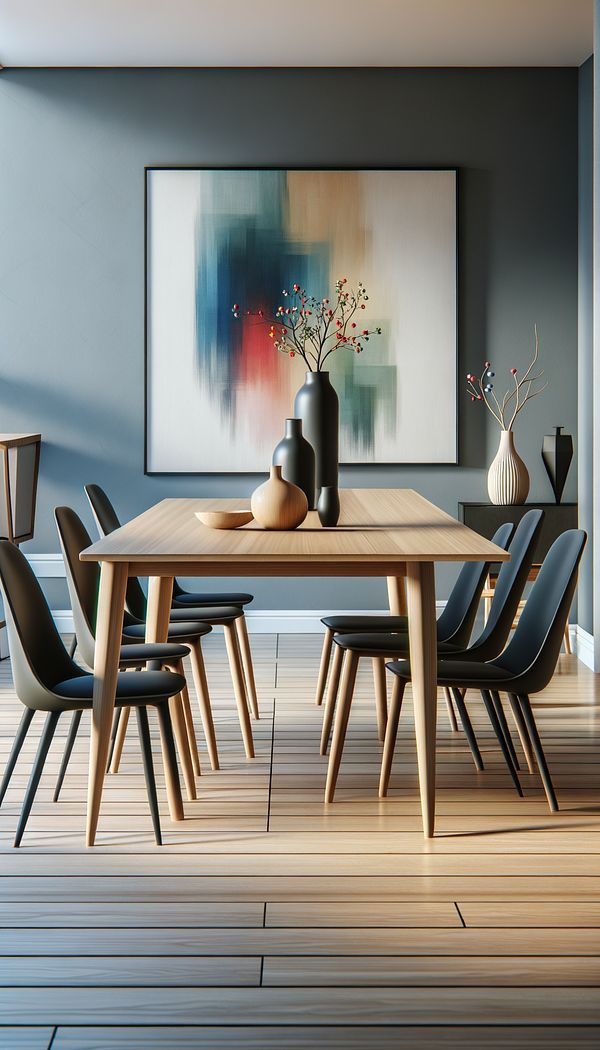What is Parsons Leg?
A simplistic, square, or rectangular support typically found on tables and chairs.
Description
The term ‘Parsons leg’ refers to a straightforward yet iconic style of table and chair leg with a specific form: straight, square, or rectangular, and with a thickness that matches the tabletop or seat to which they are attached. This simple design belies the sophisticated elegance it can bring to furniture, making it a celebrated feature in the world of interior design. The design originated from the Parsons School of Design in Paris in the 1930s, under the guidance of Jean-Michel Frank, a French designer known for his minimalist approaches.
The beauty of Parsons legs lies in their minimalism and versatility. Their understated design allows them to blend seamlessly into a variety of interior design styles, from modern and contemporary to traditional and transitional. Because of their straightforward structure, Parsons legs also emphasize the quality of the material from which they are made, whether that be wood, metal, or even acrylic. Their simplicity does not compete with other design elements in a room, making them a popular choice for designers seeking a clean and coherent look.
In addition to their aesthetic appeal, Parsons legs are also celebrated for their structural integrity. The uniform thickness and solidity provide a stable foundation for furniture, making Parsons leg designs both visually appealing and highly functional. This dual focus on form and function reflects broader trends in interior design, where beauty and usability are both key considerations.
Usage
Parsons legs are commonly found on dining tables, desks, and side tables, as well as on chairs and benches. Their minimalistic design enhances the furniture's overall appearance while supporting a variety of design themes and functional uses in both residential and commercial spaces. For example, a Parsons dining table can be the centerpiece in a modern dining room, its simplicity allowing the focus to remain on beautiful tableware or a stunning centerpiece. Alternatively, a Parsons desk, with its clean lines and unobtrusive legs, can create a tidy, focused workspace in a home office.
FAQs
-
Who designed the Parsons leg?
The Parsons leg was originated under the guidance of Jean-Michel Frank at the Parsons School of Design in Paris during the 1930s.
-
Can Parsons legs be made from materials other than wood?
Yes, although traditionally made from wood, Parsons legs can also be crafted from metal, acrylic, or other materials, emphasizing the versatility of this design.
-
How does the design of Parsons legs contribute to furniture functionality?
Parsons legs are noted for their structural integrity, offering a stable foundation for furniture. This simplicity allows for functionality and strength, making them suitable for various types of furniture and settings.
Practical Application
When incorporating furniture with Parsons legs into your design, consider the material and color of the legs in relation to the overall room aesthetic. Due to their simple form, the material's quality and finish can stand out, making them a subtle yet significant element in your design scheme. Additionally, leverage the adaptability of Parsons leg furniture to complement various interior styles, from sleek contemporary rooms to more eclectic or traditional spaces. The key is to balance simplicity with sophistication, allowing these pieces to anchor the design without overpowering it.
-
Design Styles478 articles
-
Furniture Types599 articles
-
Fabrication & Craftsmanship133 articles
-
Decorating Principles & Elements330 articles
-
VasselierA vasselier is a type of freestanding furniture.
-
SecretaryA secretary is a type of writing desk with a hinged desktop surface.
-
Shoji ScreenA shoji screen is a traditional Japanese room divider made of translucent paper and a wooden frame.
-
BatikBatik is a technique of wax-resist dyeing applied to whole cloth.
-
Torchiere LampA torchiere lamp is a floor lamp with a tall stand and an upward-facing light source.
